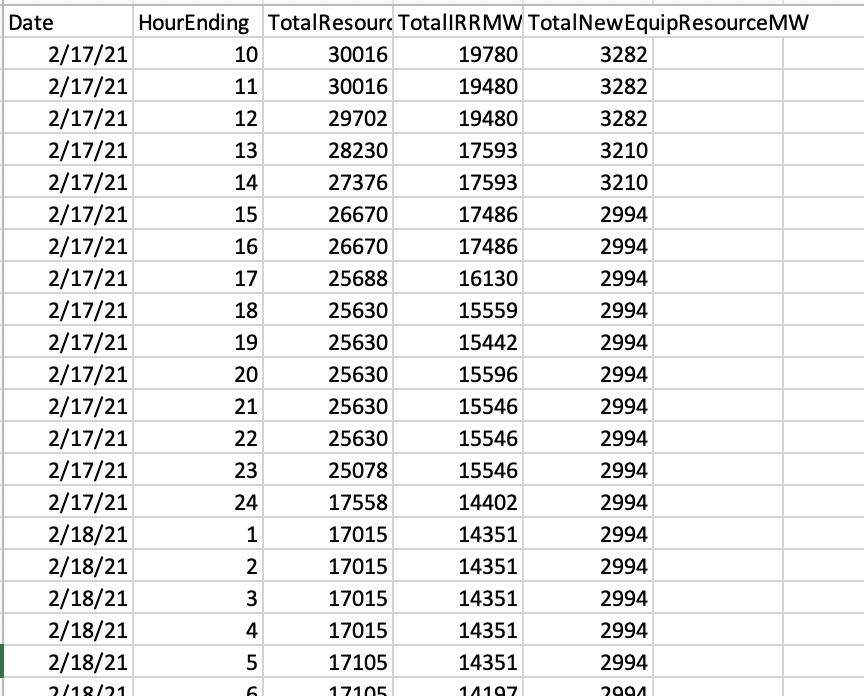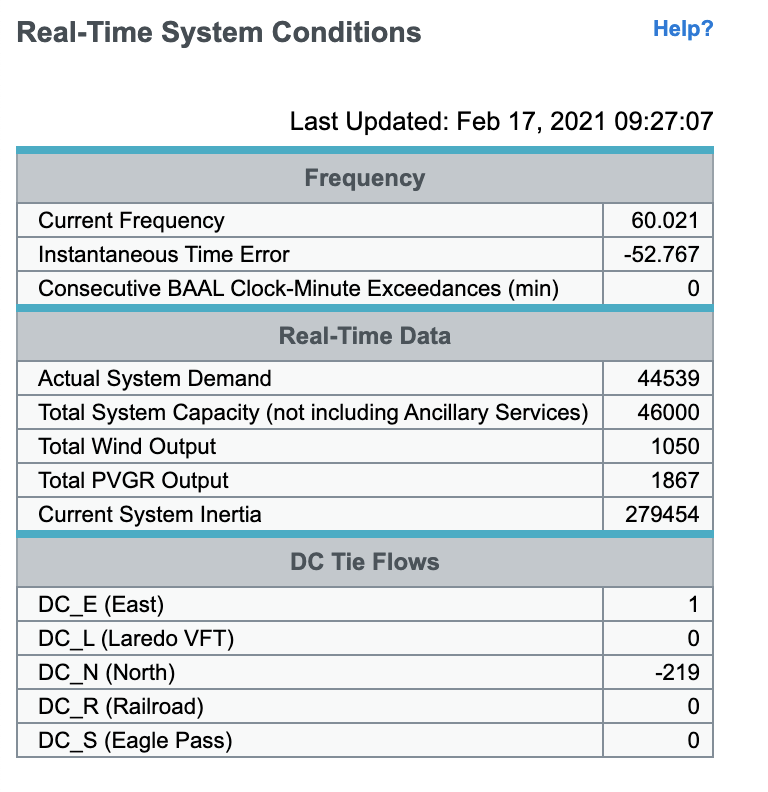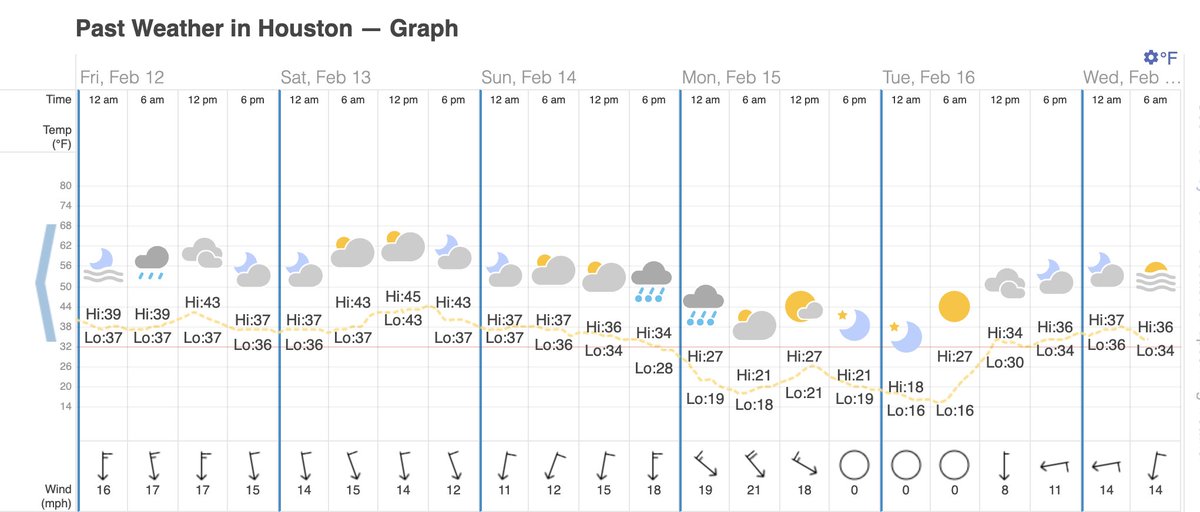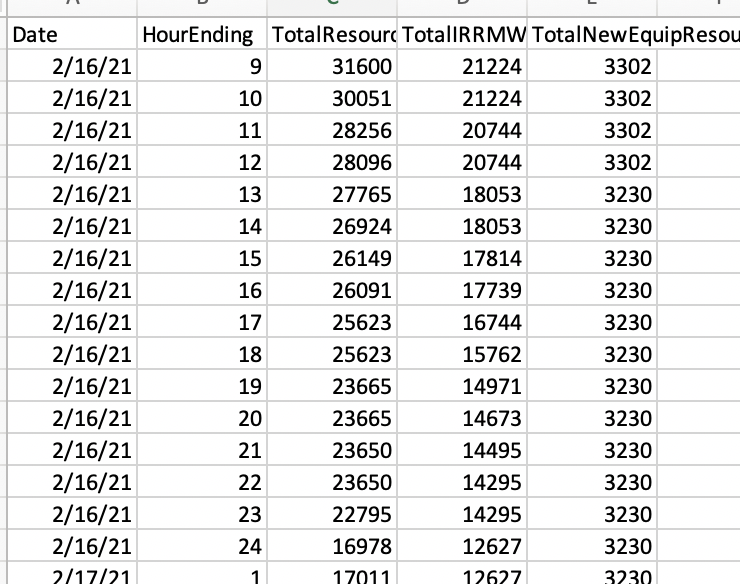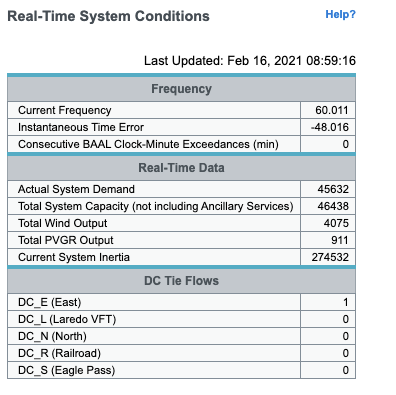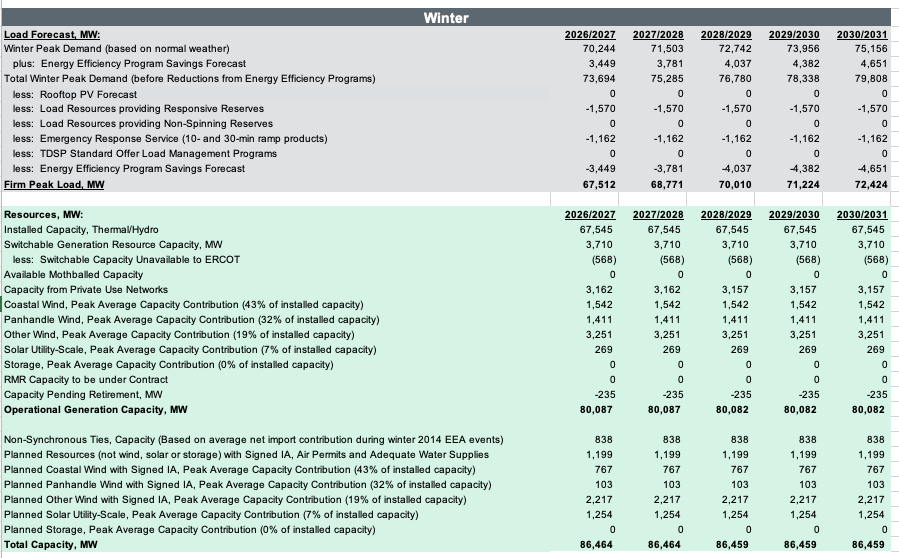
Update: I've been digging into ERCOT's opaquely labeled Hourly Resource Outage Capacity data here. Current hour report below. Here's how to read it:
TotalResourceMW = Thermal Geneators (gas/coal/nuclear) out right now / forecasted for next hours
1/
TotalResourceMW = Thermal Geneators (gas/coal/nuclear) out right now / forecasted for next hours
1/
https://twitter.com/JesseJenkins/status/1361348544154664961
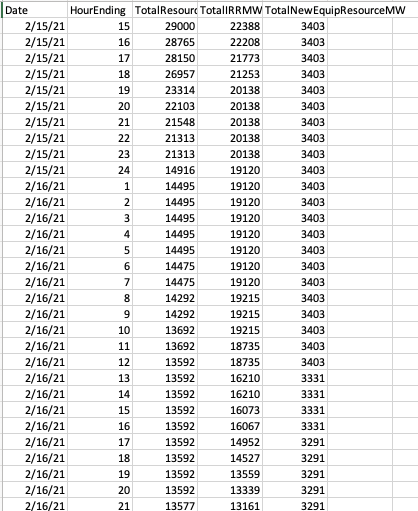
TotalIRRResourcesMW = portion of 'intermittent renewable resource' (IRR) capacity, aka wind & solar, that is not producing. This appears to be the total capacity of about 25.1 GW of wind + 3.8 GW solar minus current wind/solar output. This is NOT all forced outages (eg icing up)
ERCOT only counts on 6.1 GW of wind for winter peaking capacity and 269 MW of solar, so any number in the TotalIRRResourcesMW column < 22,531 means wind & solar are *overperforming* ERCOT planning expectations. So slight better than that at moment.
I'm told (
https://twitter.com/giarraam/status/1361410784576815107) TotalNewEquipResourceMW is resources that are starting up, but not yet synchronized with the grid to contribute capacity.
In sum: ERCOT official reports show 29 GW of thermal capacity (TotalResourceMW) still offline now, with wind and solar (TotalIRRMW) producing at or above planned capacity contribution.
Reports are posted hourly here mis.ercot.com/misapp/GetRepo…
Reports are posted hourly here mis.ercot.com/misapp/GetRepo…
Update, wind is now underperforming as well, with ~2 GW output in latest real time system report, vs ~6GW planned for in ERCOT's winter peak planning. Solar is overperforming with 2.7 GW now vs ~0.3 planned but that'll fall off in evening of course and contribute nothing at night 

• • •
Missing some Tweet in this thread? You can try to
force a refresh


